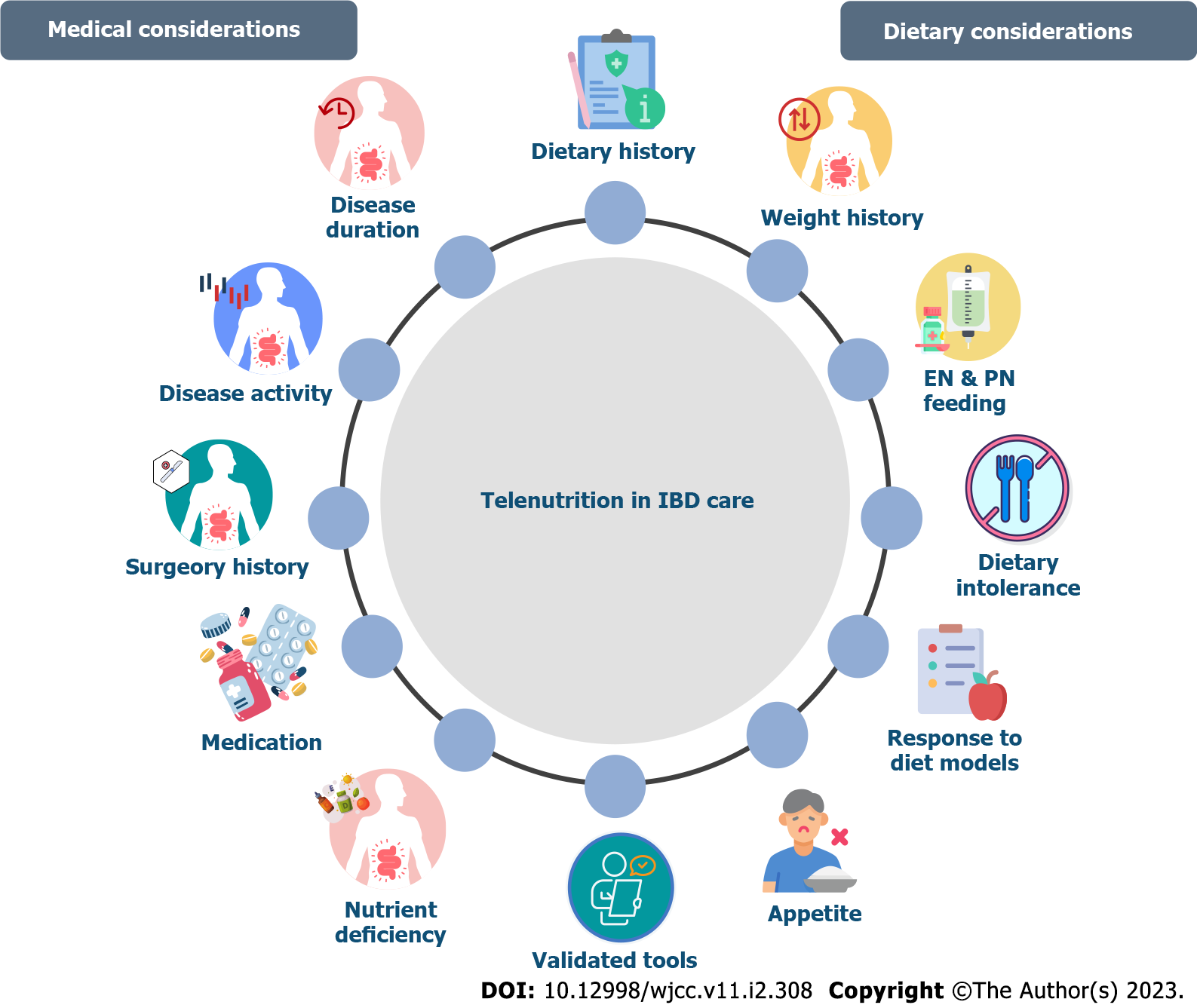Copyright
©The Author(s) 2023.
World J Clin Cases. Jan 16, 2023; 11(2): 308-315
Published online Jan 16, 2023. doi: 10.12998/wjcc.v11.i2.308
Published online Jan 16, 2023. doi: 10.12998/wjcc.v11.i2.308
Figure 1 Telenutrition in inflammatory bowel disease care for first consultation and long-term monitoring.
The first telenutrition consultation for inflammatory bowel disease (IBD) patients includes: (1) Age at diagnosis; (2) Extent and duration of disease; (3) History of surgical procedures; (4) Current and past medications; (5) Current disease activity; (6) Health behaviors (e.g., smoking and alcohol consumption); (7) Current and past enteral or parenteral feeding history; (8) Dietary history; (9) Dietary triggers or intolerance; (10) Appetite; (11) Nausea, vomiting; (12) Weight history; (13) Complementary and alternative medicine usage; (14) Response to or adverse effects of any previous diet model; (15) Micronutrient deficiencies; and (16) Validated tools for certain situations (e.g., food-related quality of life, Subjective Global Assessment, Malnutrition Universal Screening Tool, Malnutrition Inflammation Risk Tool, Saskatchewan IBD Nutrition Risk Tool, and Nutrition Risk Screening 2002). Long-term monitoring of inflammatory bowel disease patients includes: (1) Evaluating adherence to diet treatment should be a part of each virtual appointment; (2) 7-d diet diary (3-d minimum); (3) Current medications; (4) Current disease activity; (5) Appetite; (6) Nausea, vomiting; (7) Any changes in dietary habits (new dietary triggers, intolerance, or complementary and alternative medicine usage; (8) Weight; and (9) Repeat testing of validated tools for certain situations. EN: Enteral nutrition; PN: Parenteral nutrition.
- Citation: Güney Coşkun M, Kolay E, Basaranoglu M. Telenutrition for the management of inflammatory bowel disease: Benefits, limits, and future perspectives. World J Clin Cases 2023; 11(2): 308-315
- URL: https://www.wjgnet.com/2307-8960/full/v11/i2/308.htm
- DOI: https://dx.doi.org/10.12998/wjcc.v11.i2.308









